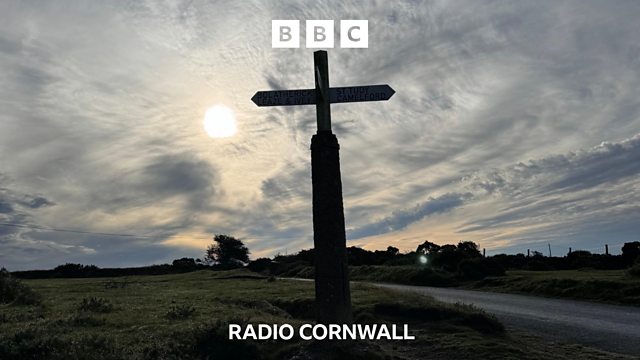An Nowodhow - the News in Cornish
An Nowodhow is written and read by Steve Penhaligon, the Script editor is Wella Morris.
Recording 1/3
Myttin da. Wosa spena milvilyow a beunsow dres an seyth bledhen eus passyes, kevarghewydh afrikanek dyghow re ygoras gwithti nowydh yn chi Emily Hobhouse, rag solempnya bewnans an Gernowes, meur hy bri, neb a sawyas lies benyn ha flogh y’n Vresel Boer.
Emily a devis yn Sen Iv, ogas dhe Lyskerrys, le mayth o hy thas pronter ha kynsa Arghdyagon a Vosvena.
Kyn nag o hi gerys-da gans nebes tus yn Breten Veur, drefen hy bos kaskyrghes erbynn an Vresel Boer, hi a wrug meur rag gwellhe an studh a venenes ha fleghes synsys yn kampow keskreunyans bretennek yn Afrika Dyghow, ha hwath meurgerys yw hi y’n pow na.
Emily a verwis yn Loundres yn mil, naw kans, hwegh warn ugens, hag ynkleudhys yw hy lusu yn delow yn Afrika Dyghow.
Translation 1/3
Good morning. After spending millions of pounds over the last seven years, a South African investor has opened a new museum at the home of Emily Hobhouse, to celebrate the life of the famous Cornishwoman who saved many women and children during the Boer War.
Emily grew up in St Ive, near Liskeard, where her father was a vicar and the first Archdeacon of Bodmin.
Although she was not well-regarded by some people in Great Britain, because she was a campaigner against the Boer War, she did a lot to improve the condition of women and children held in British concentration camps in South Africa, and she is still much loved in that country.
Emily died in London in 1926 and her ashes are buried in a statue in South Africa.
Story 2/3:
Gwenenen danow re beu gwelys yn park nowydh plensys yn Lulynn.
Godhonydh divroans hwesker, Doktour Will Hawkes, a welas Gwenenen Valweyth Perkins ow vysytya bleujyow morgelyn re bia plensys yn Park Gwavos rag tenna ponegoryon.
Plensys veu an park yn gwenton gans dyskyblon a Skolyow Kynsa Lulynn ha Trevalvar gans gweres a lowarthoryon dhyworth Bagas Flora Kemeneth Lulynn.
Eghen beryllys yw Gwenenen Valweyth Perkins, ha hwath ow teklinya. Mes, herwydh Ekologieth Kernow, argel yw Kernow rag an eghen, hag y kevir an brassa poblans y’n Ruvaneth Unys a-dro dhe Bedn an Wlas.
Yn-medh Doktour Hawkes, “Namnygen re beu an tyller ma gwrys gwiw rag oll agan ponegoryon marthus. Yth yw dustuni a gwalita an tyller may teuth mar skon eghen mar danow”.
Translation 2/3
A rare bee has been spotted in a newly planted park in Newlyn.
Insect migration scientist, Dr Will Hawkes, saw the Perkins’ Mining Bee visiting seaholly flowers which had been planted in Gwavas Park to attract pollinators.
The park was planted in spring by pupils from Newlyn and Alverton primary schools with the help of gardeners from Newlyn Community Flora Group.
The Perkins’ Mining Bee is an endangered species which is still in decline. But, according to Kernow Ecology, Cornwall is a stronghold for the species, and the largest population in the UK is to be found around Land’s End.
Dr Hawkes said, “The site has only just been made suitable for all of our wonderful pollinators. It is testament to the quality of the site that such a rare species has arrived so quickly”.
Recording 3/3
Konsel Kernow re dheklaryas y fydh ynkleudhys yn Lannwedhenek, nessa bledhen, remenantys a varner gwreckys, dell grysir, y’n etegves kansbledhen.
Kevys veu an korf eskern, nans yw diw vledhen, war als ogas dhe Dreavon wosa tewedh nerthek.
Provow radyokarbon a dhiskwedhas bos an eskern ma dhyworth den ynter pymp warn ugens ha dew ugens bloodh, hag ev dhe verwel nans yw ogas ha tri hans bledhen.
Konsel Lannwedhenek re assentyas ynkleudhyas an marner yn korflan an dre nessa gwenton, hag yma govenek dhedha appoyntya artydh rag desinya men bedh gwiw.
Arghans rag tyli kost an men bedh a vydh sevys dre hwarvosow leel ha donesonow. Mar pe moy arghans sevys es dell eus edhom, kevres vydh an arghasow keworransel dhe’n RNLI.
Ha henn yw oll ahanav vy an seythen ma. Terebo nessa!
Translation 3/3
Cornwall Council has announced that the remains of a sailor, believed to have been shipwrecked in the 18th century, will be buried in Padstow next year.
The skeleton was found two years ago on a cliff near Trevone following a powerful storm.
Radiocarbon tests showed that these bones were from a man between 25 and 40 years of age, and that he died nearly 300 years ago.
Padstow Council have agreed to bury the sailor in the town cemetery next spring, and they hope to appoint an artist to design a fitting headstone.
Money to pay the cost of the headstone will be raised through local events and donations. If more money is raised than is needed, the additional funds will be donated to the RNLI.
And that’s all from me for this week. Until next time!
This week’s An Nowodhow was written and presented by Steve Penhaligon and edited by Wella Morris.
Pic: St Breward by Cyril Stratus
Duration:
This clip is from
More clips from �鶹�� Radio Cornwall
-
![]()
Clearing up in Quintrell Downs after the tornado
Duration: 02:23
-
![]()
Yellow warning for wind and rain on Sunday
Duration: 01:09
-
![]()
Yellow warning for ice in Cornwall
Duration: 01:42
-
![]()
An Nowodhow - the News in Cornish
Duration: 04:49






